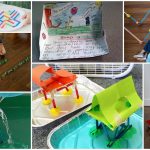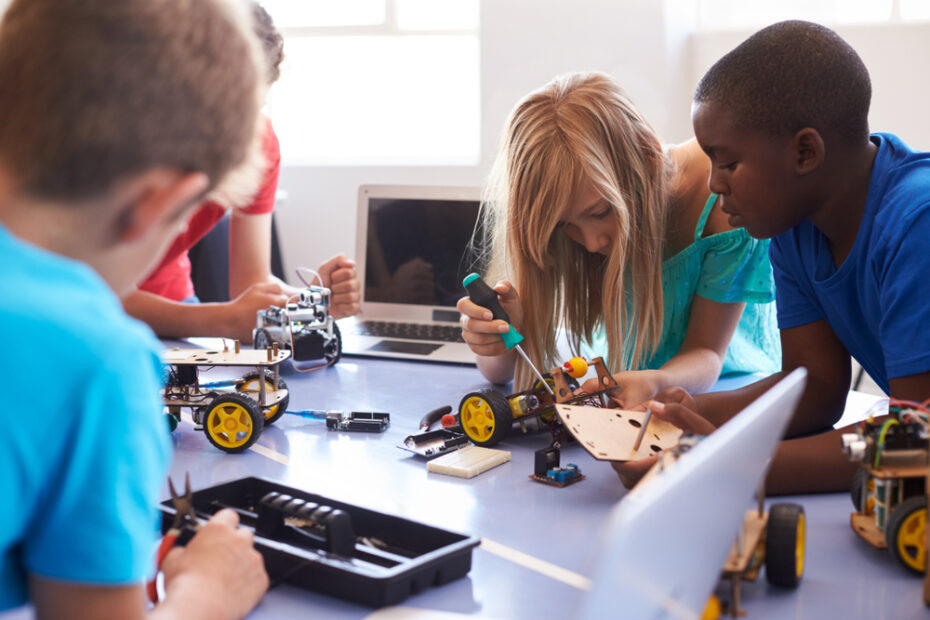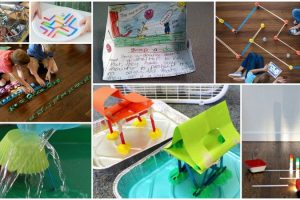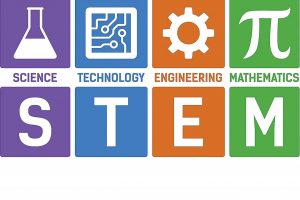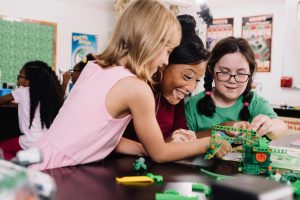STEM fields like science, technology, engineering and mathematics increasingly demand strong teamwork and collaboration abilities. How can STEM education equip students with these essential skills?
Here we’ll explore proven instructional strategies and activities to develop collaborative proficiency through STEM learning.
Implementing Project-Based Learning
When students work together to investigate issues or tackle complex challenges, collaboration skills naturally get strengthened.
Project-based learning frames STEM content around solving messy, real-world problems that require coordination and cooperation. Teachers facilitate as students adopt roles, make plans, conduct research, build prototypes, test solutions, and present final products.
Structuring milestones, accountability, and peer reviews develops communication, leadership, and conflict resolution abilities. In a study by Keiler, project-based STEM learning was shown to significantly improve collaboration competencies. The authentic teamwork empowers students to gain confidence in collaborating.
Establishing Productive Teams
Thoughtful team formation and norms set a foundation for quality collaboration. Best practices include:
- Structuring diverse, interdependent roles based on skills and strengths
- Developing written team contracts outlining values, expectations and processes
- Teaching techniques like active listening, questioning and constructive feedback
- Preparing students to navigate conflicts and reach compromises
- Fostering personal accountability through peer review of contributions
- Allowing time for both group and individual reflections on teamwork
According to researchers Lee and Lim, structured team development processes enhance STEM collaboration abilities. They enable teams to leverage differences and function cohesively.
Scaffolding Successful Group Work
Ongoing guidance prevents unproductive group dynamics. Strategies include:
- Providing rubrics, templates and examples of quality collaboration
- Checking in regularly with groups and suggesting improvements
- Offering discussion prompts and goal-setting charts to complete
- Having students summarize takeaways after partner or small group tasks
- Circulating to mentor students struggling with teamwork aspects
Education scholar Cohen notes, “STEM group work requires sufficient teacher facilitation as students develop collaborative muscle.” Focused support allows teamwork skills to strengthen.
Simulating Real-World Collaboration Settings
Roleplaying authentic STEM scenarios stretches collaboration abilities. Examples include:
- Case competitions requiring teams to rapidly problem solve for mock clients
- Hacking simulations where groups “attack” and “defend” cyber systems
- Model United Nations events focused on drafting solutions to global issues
- Mock conferences for presenting group research findings and proposals
Research shows immersive simulations, cases, and modeled workflows build the complex cognitive, social, and emotional skills underpinning collaboration. Mimicking real contexts makes teamwork instinctive.
Incorporating Digital Collaboration Tools
Online tools enable efficient remote and asynchronous group work. Valuable technologies include:
- Shared document editing platforms like Google Docs
- Chat apps like Slack for quick communication
- Interactive whiteboards like Padlet or Miro for virtual brainstorming
- File sharing sites and cloud storage to centralize group resources
- Project management systems like Trello to organize workflows and responsibilities
Blended with purposeful face-to-face interaction, platforms like these facilitate collaboration in a tech-infused world. A study by Raes et al confirms technology-supported team learning develops collaboration readiness. Digital proficiency amplifies group potential.
Using Peer Teaching and Multilevel Groupings
Cross-ability peer learning reinforces student leadership and empathy. Strategies include:
- Jigsaw activities where groups focus on becoming experts in one aspect and then teach peers
- Mixed-ability grouping for projects so students can mentor those needing support
- Older student and adult mentors to provide guidance for teams
- Scaffolding leadership opportunities like directing a team, delegating roles, summarizing findings, etc.
According to research by Topping and Ehly, well-structured peer-to-peer instruction and modeling enhances collaboration capabilities. Teaching others advances your own skills and mindsets.
Fostering Reflection and Self-Assessment
Constructive reflection cements teamwork lessons. Ways to build this habit include:
- Having students complete peer evaluation surveys on group members’ collaboration strengths and areas for growth
- Using reflection journals or discussion prompts to analyze experiences with different team roles and dynamics
- Self-assessments of collaboration proficiencies to set improvement goals
- Group debriefs on team successes, pitfalls, and future strategies
Metacognition through individual and group reflection reinforces collaboration learning. As evidenced by studies from Kapur and Goos, guided reflective practices enable students to continually improve collaboration strategies.
Developing Cross-Disciplinary Communication and Leadership
Along with teamwork, STEM students need versatile skills like:
- Communication – Tailor messaging and models for diverse audiences via presentations, documentation, demos, and more.
- Project management – Coordinate complex plans, schedules, resources, budgets, and stakeholders.
- Creativity – Invent innovative solutions and designs through brainstorming and prototyping.
- Persistence – Overcome obstacles through iterative improvement, controlled failure, and resilience.
- Cultural agility – Bridge diverse disciplines and backgrounds by flexing to new environments and norms.
Through authentic, structured collaboration experiences, STEM education can instill these multifaceted abilities critical for impact and leadership.
Maximizing Collaboration for Empowered Learners
Here are key strategies STEM teachers can leverage:
- Begin with team building – Allow groups to establish identity, roles, norms and plans.
- Ensure meaningful purpose – Tie collaboration to real needs and contexts.
- Monitor and mentor – Check-in and advise groups/individuals regularly.
- Foster diverse thinking – Encourage broad input and constructive critique.
- Require reflection – Get students to analyze their collaboration and leadership experiences.
- Set clear goals and deliverables – Maintain accountability for contributions and results.
- Allow some control over groups – Enable students to solve issues before intervening.
Effective collaboration multiplies outcomes while building essential lifelong skills. “STEM nurtures collaboration abilities that empower students to excel with others,” remarks education leader Dr. Freeman Hrabowski. Teamwork and leadership development must be core to STEM learning.




